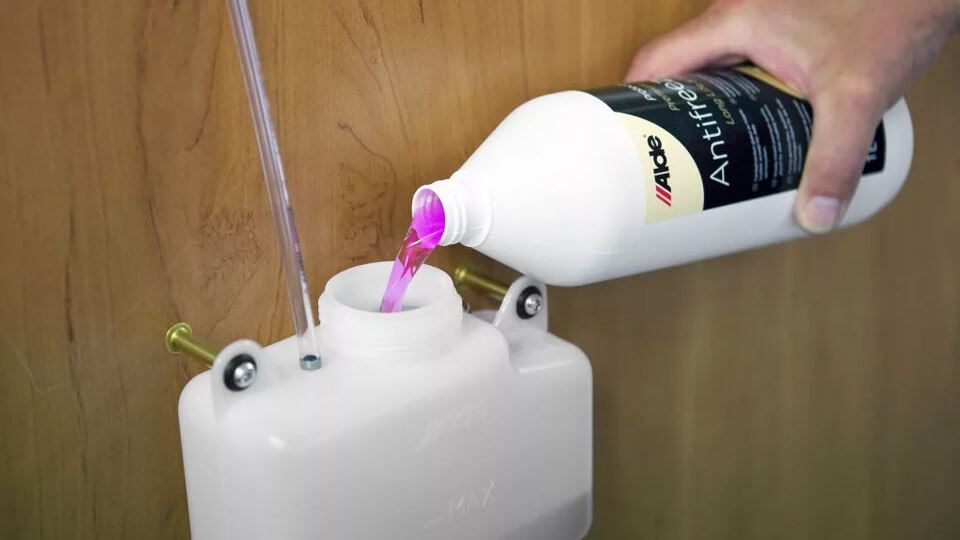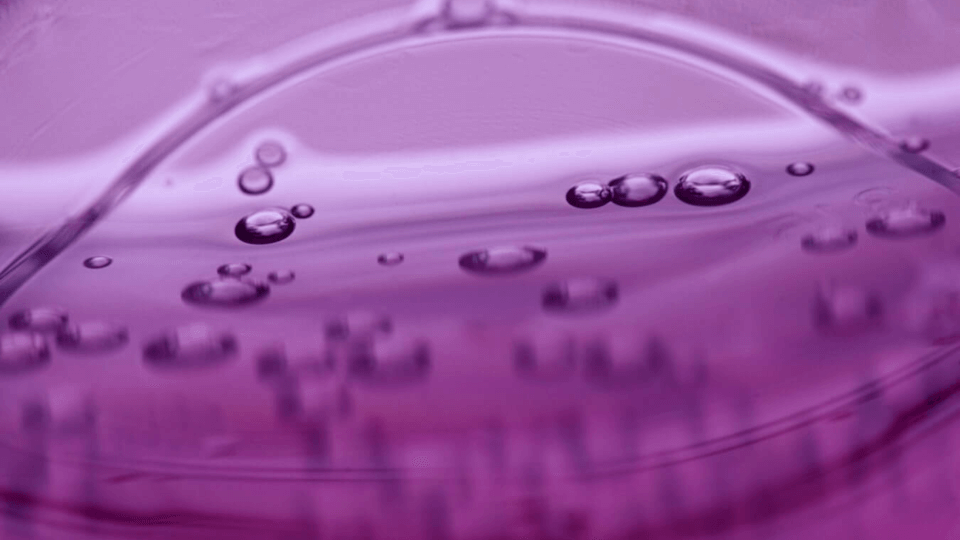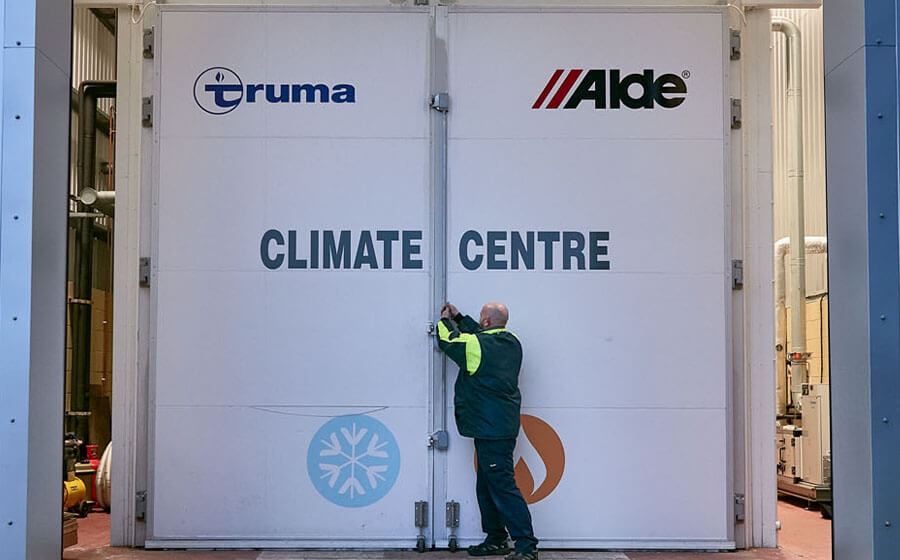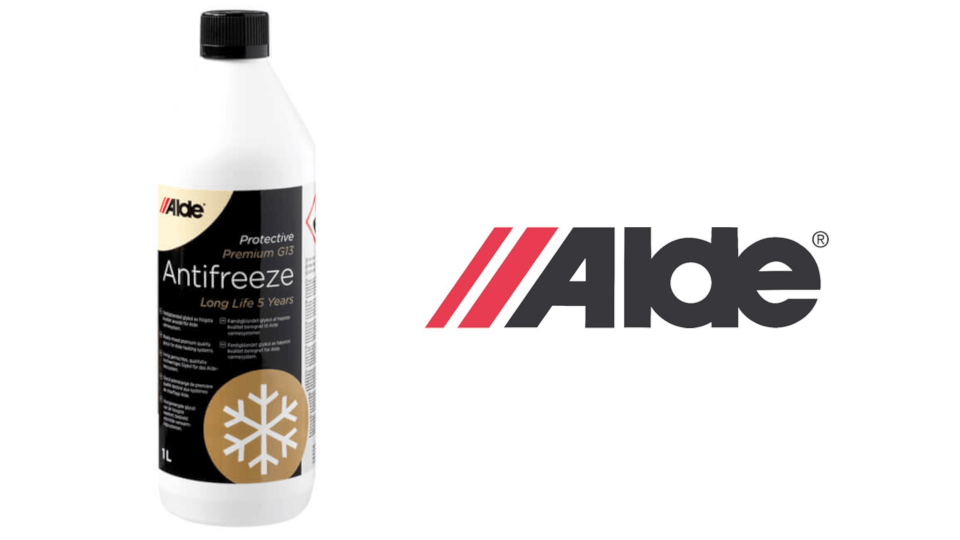Caravan Antifreeze - Your Questions Answered!

Everything you need to know about Caravan Antifreeze.
We’re often asked about how and when to change caravan antifreeze. Let us explain all with our guide below.
When you’re going away in your caravan, you’ll want to have the peace of mind that everything is in order. So, it’s always a good idea to check that your caravan antifreeze is topped up and ready to go. Then, you can cosy up in your caravan, heating on and a cup of tea in hand.
There are all sorts of advice and tips out there and caravan antifreeze of all colours of the rainbow. It's enough to make your head spin! Luckily, we're here to help to make things a bit clearer for you by answering the most popular questions regarding Antifreeze and to tell you all about Alde G13 Antifreeze
4 Things that Caravan Antifreeze Does for Your Heating System
1. What is antifreeze: it does what its name suggests and prevents your system from freezing over, working down to temperatures of -37°c.
2. Corrosion Inhibitor: hot surfaces in the caravan heating system can corrode over time. This prevents that from happening.
3. Keeps Your System Clean: The caravan antifreeze is also a biocide that prevents bacteria from growing in your heating system.
4. Coolant: Protects your system by stopping it from overheating.
Why Are There Different Colour Antifreezes?
You may be wondering which antifreeze you should be using. Contrary to some advice out there, colours are not a sure-fire way of telling apart different types of caravan antifreeze products. There is a basic guide along the lines of:
Blue: Usually Silicate based and common in UK market heating systems.
Orange: Mainly OAT (Organic Acid Technology) based and used mainly in Europe, specifically in caravan and motorhomes.
Pink: Usually Ethylene Glycol or glycerine based. G12++ and G13 antifreeze come in pink.
Green: Used in older heating systems and should not be used anymore.
There are no industry standards when it comes to the colour of antifreeze so always read the label when purchasing. However, colour can be useful when trying to figure out when to change over your existing antifreeze fluid.

Can I Top-Up My Antifreeze?
If the fluid level in your heating system dips too low, your caravan heating system will need an antifreeze top-up. If your system has the wrong liquid level, it can invalidate your warranty or damage the system so it’s worth double-checking!
You can top up the ethylene glycol in the expansion tank. You can do this manually or by using Alde’s top-up pump, (this fills and vents the system). Top up manually by slowly pouring the ethylene glycol mixture into the expansion tank. When the heating system is cold, the level should be approx. 1 cm above the MIN line. You then need to bleed the system and if the level falls during bleeding, top-up again. In newly filled heating systems, it is recommended to bleed the system at regular intervals.
If you find that you are having to top-up your system a lot, you may have a leak so get your system looked at by your local caravan dealer.
Changing The Antifreeze in your Van
Older types of caravan antifreeze require you to change your antifreeze fluid once every two years but the Alde G13 antifreeze can be changed every 5 years. If you are unsure what type of fluid has been used in your van, then it is recommended to change the existing fluid to G13 after 2 years of purchasing it (it is highly recommended to do this if your fluid is not pink in colour).
When filling the tank with the new Alde antifreeze, ensure that the liquid is free of floating debris and does not smell strongly of vinegar or fish. When filling the tank, make sure that, if the liquid is cold, the level is approx. 1 cm above the MIN line. If you are doing a complete change of the antifreeze fluid, you will need to purchase quite a few litres to do so. Each van will need a different amount depending on the caravan heating system you have but the average amount needed to replace all the fluid is between 12-15L.
It is possible to change the antifreeze in the van yourself but it can require certain equipment that you might not have and can be tricky for some people. To avoid any mistakes or for your own peace of mind, it is highly recommended to reach out to your local dealer who will be able to fully change the antifreeze in the system for you for a fee.
Can I Mix Different Types of Caravan Antifreeze?
It is NOT recommended to mix different types of antifreeze but Alde do say that, should you need to or want to, you can mix Alde G13 antifreeze with the blue antifreeze found as standard in most UK systems. This is because the G13 antifreeze is back compatible. However, it is always best to do a complete changeover.
The main thing to ensure is that the antifreeze you are using has the same type of corrosion inhibitors and that you don’t mix anti-freeze containing silicates with anti-freeze containing non-silicate-treated OAT.
If you are diluting your own caravan antifreeze, make sure that you aim for a 50:50 ratio of glycol to water. Do not use more than 50% glycol and do not go below 40% or you may damage the system. Preferably, use deionized water to mix with.

What is Alde Premium G13 Antifreeze?
The Premium G13 Antifreeze by Alde is a ready-to-use solution that keeps your heating system working as it should. Antifreeze is found in your caravan heating system and radiators and your system cannot work properly without it. For the best results in your Alde heating system, it is recommended to use the more modern G13 type antifreeze that has been made by Alde themselves.
Why use Alde Premium G13 Antifreeze?
Alde has designed the Alde G13 Antifreeze specifically for their Alde heating systems so you know that, when you use this, you will be using the best antifreeze product for your Alde heating system. Unlike most of the older antifreeze types, the Alde G13 Antifreeze will last up to 5 years before it needs to be changed, saving you money, time, and effort.
The Alde G13 Antifreeze is also pre-mixed with a 50:50 ratio of ethylene glycol and deionized water so you can rest assured that the solution is strong enough and you will not have to dilute it yourself.
Depending on the make and model, you could need up to 12-15Ltr of caravan antifreeze to replace all the fluid in your system. To save you time, money, and faff (not to mention waste) Alde G13 antifreeze now comes in new, bigger 4-litre bottles, so you can order fewer bottles to fill up.
Alde has been making heating systems since 1966 so when buying an Alde product, you know that it will have been made by experts. Save yourself time and worry — switch to G13 antifreeze!

